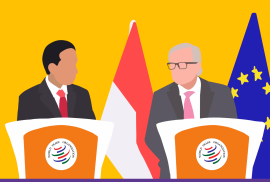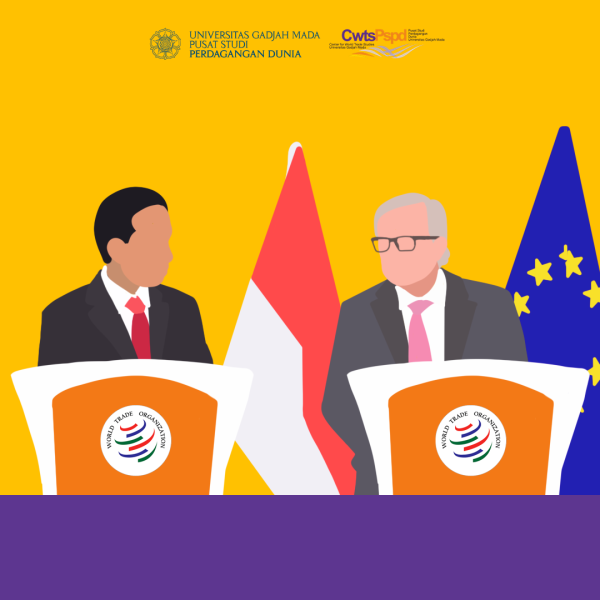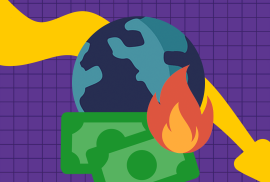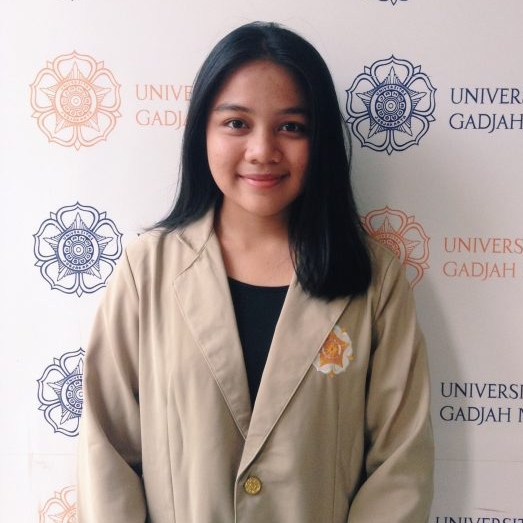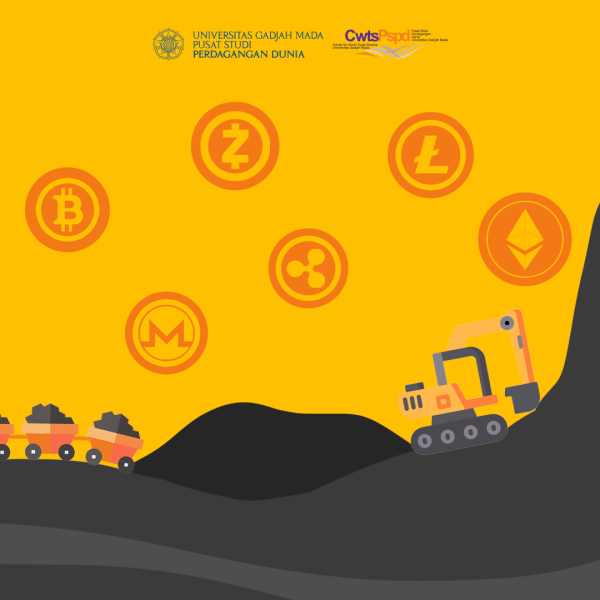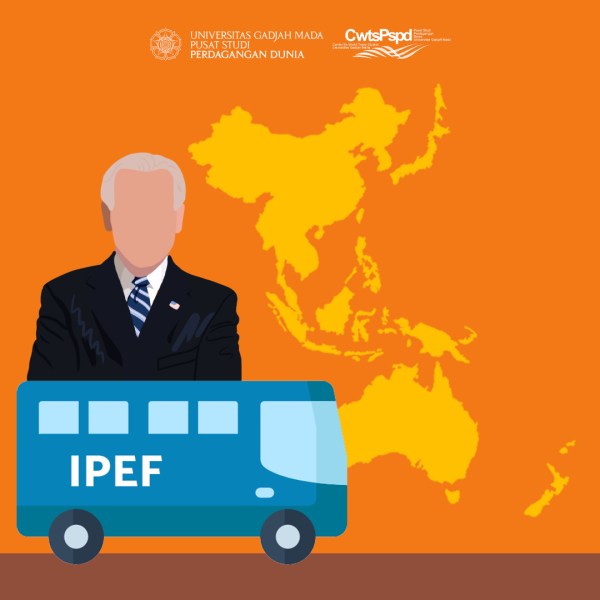The swift influence of globalization encourages the creation of fashion trends that are changing very quickly. To survive, various fashion companies not only compete with competitors who offer low prices, but also compete to meet consumer demand in accordance with the latest trends or called fast fashion (Barnes & Lea-Greenwood, 2010). The phenomenon of fast fashion continues to grow with two main characteristics, namely reducing production process delays and increasing consumer choice by ensuring the stocks of goods constantly (Hines, 2004). Therefore, various fashion companies mass-produce 52 “micro-seasons” every year or equal to one new collection every week and it is estimated that by 2050 the production can reach 160 million tons.
Mass fashion production comes with consequences. UNEP notes that the fashion industry accounts for 8-10% of carbon emissions globally – more than the amount of carbon emitted by international aviation and sea freight. In the production process, this industry also requires abundant water resources and contributes to 20% of global wastewater as a whole. To produce synthetic textiles, this industry requires 42,534 kilo tons of plastic annually which then ends up as waste in the sea. Environmental problems in this industry also arise in the post-consumption phase with the accumulation of end-of-life fashion waste. These various data indicate that mass production in this industry has a significant impact on the environment without any serious handling efforts.
In order to support sustainability, the fashion industry which has been running a linear approach to the manufacturing, distribution and consumption processes must switch and be replaced with a circular economy approach through 3 main concepts, namely reduce, reuse, and recycle or called circular fashion. Circular fashion implementation requires strong support and commitment from various parties including the government as a regulator. This concept is implemented in a complex manner in every continuous phase starting from the early stages of the fashion product life cycle, namely at the design stage until when its use is complete by ensuring that the product will not end up polluting the environment (Brismar, 2017).
However, the implementation of circular fashion still faces challenges (Kirchherr, 2018). For example, companies tend to buy new synthetic textile materials because they are cheaper than recycling as a result of the government's policy of subsidizing fossil fuels being used to produce these materials. Therefore, public and business people's awareness of the importance of circular fashion needs to be accompanied and supported by regulatory readiness as the main supporting factor that has binding coercive power. Environmental problems in the era of sustainable development need to be resolved through the role of law as a social engineering tool. In this case, law is used as a scientific formulation, logical approach, and inventive skill to regulate, manage, and move society towards various reforms (Pound, 1965).
Researchers argue that the fast fashion phenomenon needs to be handled with smart regulatory solutions or smart regulation (Preston, 2017). Through this approach, while most of the investment, innovation and implementation of circular fashion is carried out by the private sector, the government plays an important role in passing policies that support innovation, investment and sustainable business activities. Policies to deal with fast fashion are designed as a whole through a series of policies that support the use of environmentally friendly materials and other innovations, fiscal policies by disincentivizing activities that are contrary to resource protection efforts, to end-of-life product regulation.
The concept of smart regulation is no longer just an idea along with the publication of the European Union Strategy for Sustainable and Circular Textiles by the European Union last March. By 2030, the European Union has a vision to ensure that all textile products on its market are long-lived, made from recycled fiber, free from hazardous materials, and produced in a process that respects social and environmental rights. In this strategy, the European Union succeeded in designing a comprehensive policy and showing full support for the implementation of circular fashion.
The European Union regulates the start of the textile life cycle by implementing stricter product design rules to reduce microplastic waste from synthetic materials. In order to answer the cultural challenge in the form of public awareness, Digital Product Passport (DPP) is implemented to collect data about products and their supply chain and share it throughout the business chain so that all business people including consumers have a good understanding of the product, its supply chain, and environmental impact. As for dealing with end-of-life waste, the European Union applies Extended Producer Responsibility (EPR) which requires producers to be responsible for managing end-of-life products marketed in the country with the concept of reuse and recycle. This comprehensive policy from upstream to downstream has implications to 16 legislative actions which include the creation of new regulations such as the Eco Design for Sustainable Product Regulation, as well as revision and harmonization of related regulations, including the Textile Labeling Regulation, Waste Framework Directive, Best Available Techniques Reference Documents, and Taxonomy Regulation.
On the other hand, regarding the policies of the European Union, Kerry Bannigan, Executive Director of the Fashion Impact Fund––an organization that supports the role of women in the fashion industry––noted that fashion is a global issue that requires commitment from other countries to cooperate in building a circular economy infrastructure. Currently, 15 developed and developing countries along with various European Union member countries who are members of the Global Alliance on Circular Economy and Resource Efficiency (GACERE) have committed to implementing and advocating for circular fashion in 2020. In addition, G20 countries also held workshops in circular fashion which discuss the role of the state to contribute through supportive policies in 2021. However, to date, apart from the European Union, only the United States has regulated circular fashion through the New York Fashion Sustainability and Social Accountability Act which is currently entering the legislation process. Therefore, although various countries are currently committed to circular fashion through international cooperation, there are still many developed and developing countries that have not implemented this concept at the level of formation and harmonization of regulations.
As a reflection, Indonesia as one of the developing countries has paid attention to solving the problem of textile waste in a sustainable manner in the green industry program, precisely through the Regulation of the Minister of Industry of the Republic of Indonesia Number 13 of 2019. More broadly, the responsibility of the textile industry in relation to wastewater quality standards is regulated through Law Number 32 of 2009 concerning Environmental Protection and Management jo. Minister of Environment Regulation Number P.16/MENLHK/SETJEN/KUM.1/4/2019. However, these various regulations have not included new breakthroughs in relation to ongoing efforts to deal with the current fast fashion phenomenon. On the other hand, the development of environmental law in Indonesia has also been carried out partially, as evidenced by the fossil fuel subsidies that are still being implemented by the government, which reached USD 8.6 billion in 2019 and at the beginning of the pandemic, the G20 countries allocated USD 318.84 billion to support fossil energy. This indicates that the existing policies have not been compiled in a systematic and integrated manner to address environmental problems. Whereas on the one hand, this phenomenon continues to be worrying, supported by the fact that Indonesia has produced 2.3 million tons of textile waste in 2021. In fact, the Indonesian government's efforts to give an appeal about the circular economy to the people in Indonesia have been carried out in collaboration with the Danish government. However, the cooperation that has been established has not been able to encourage Indonesia to implement real policies and harmonize regulations so that this cooperation still needs to be strengthened.
In closing, a legal adage “het recht hink achter de feiten aan” describing legal conditions that are always struggling to follow reality. However, law as a tool of social engineering has been able to answer the modern problems that are happening today. Based on the description above, regulation and international cooperation play a central role in implementing circular fashion. The urgency to overcome fast fashion problems that have a major impact on the environment needs to be supported by the government's strong commitment to being on the pro-environment side and translating it into a holistic regulatory level. Furthermore, circular fashion is an effort that must be encouraged by cooperation between developed and developing countries. Thus, it is hoped that countries around the world have the same vision and mission to create an atmosphere that supports the implementation of circular fashion globally.
References
“A New Textiles Economy: Redesigning Fashion’s Future,” 2017. https://ellenmacarthurfoundation.org/a-new-textiles-economy
Barnes, L., and G. Lea‐Greenwood. “Fast Fashion in the Retail Store Environment.” International Journal of Retail & Distribution Management 38, no. 10 (2010): 760–72. https://doi.org/https://doi.org/10.1108/09590551011076533
Boucher, Julien, and Damien Friot. “Primary Microplastics in the Oceans: A Global Evaluation of Sources,” 2017. https://portals.iucn.org/library/sites/library/files/documents/2017-002-En.pdf
Brismar, Anna. “What Is Circular Fashion?,” 2017. https://greenstrategy.se/circular-fashion-definition/
Directorate-General for Environment. EU Strategy for Sustainable and Circular Textiles (2022). https://ec.europa.eu/environment/publications/textiles-strategy_en
Institute for Essential Service Reform. “Subsidi Energi Fosil Menghambat Transisi Energi,” 2021. https://iesr.or.id/subsidi-energi-fosil-menghambat-transisi-energi
Kirchherr, Julian, Laura Piscicelli, Ruben Bour, Erica Kostense-Smit, Jennifer Muller, Anne Huibrechtse-Truijens, and Marko Hekkert. “Barriers to the Circular Economy: Evidence From the European Union (EU).” Ecological Economics 150 (2018): 264–72. https://doi.org/https://doi.org/10.1016/j.ecolecon.2018.04.028
Kompas. “Kurangi Limbah Tekstil, Bappenas Ajak Industri Terapkan Konsep Fashion Sirkular,” 2022. https://money.kompas.com/read/2022/02/24/083300926/kurangi-limbah-tekstil-bappenas-ajak-industri-terapkan-konsep-fashion-sirkular?page=all
“New York Fashion Sustainability Act: Now In Committee,” 2022. https://www.natlawreview.com/article/new-york-fashion-sustainability-act-now-committee
Preston, Felix. “A Global Redesign? Shaping the Circular Economy.” Chatham House Briefing, 2012. https://www.chathamhouse.org/sites/default/files/public/Research/Energy, Environment and Development/bp0312_preston.pdf
Pound, Roscoe (1965) "Contemporary juristic theory," in Dennis LLOYD (ed.) Introduction to Jurisprudence. London: Stevens and Sons. Second edition, pp. 247-252.
Smitts, Helene. “Fashion Industry, We Must Prepare for New Regulations,” 2022. https://sourcingjournal.com/topics/sustainability/recover-texiles-recycling-fashion-industry-regulations-waste-337870/
Stanton, Audrey. “What Is Fast Fashion, Anyway?,” n.d. https://www.thegoodtrade.com/features/what-is-fast-fashion.
United Nations Environment Programme. “Financing Circularity: Demystifying Finance Fort The Circular Economy” 2020. https://www.unepfi.org/publications/general-publications/financing-circularity/
———. “UN Alliance For Sustainable Fashion Addresses Damage of ‘Fast Fashion,’” 2022. https://www.unep.org/news-and-stories/press-release/un-alliance-sustainable-fashion-addresses-damage-fast-fashion
Webb, Ella. “EU Moves to Legislate Sustainable Fashion. Will It Work?,” 2022. https://www.voguebusiness.com/sustainability/eu-moves-to-legislate-sustainable-fashion-will-it-work







